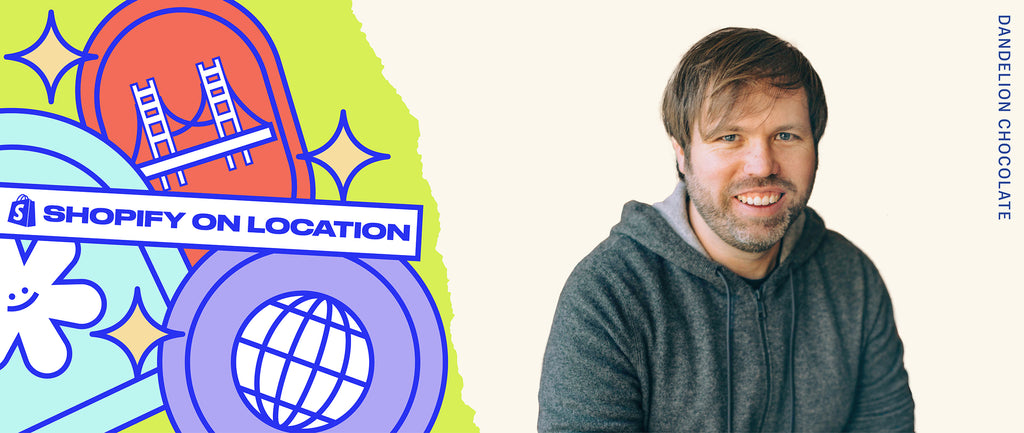Join us each Thursday for Shopify On Location in San Francisco, a special miniseries from the podcast team. For the new few months, tune in for invaluable lessons about how to innovate and when to take risks. Listen to Shopify On Location here:
Todd Masonis was already a Silicon Valley success story. He and his partner, Cameron Ring, sold their tech company in a multimillion-dollar deal in 2008. After the acquisition, Todd started traveling the world and was inspired to try making his own chocolate.
Todd says he had no intention of starting another company, but now he’s one of the co-founders of蒲公英的巧克力, a San Francisco–based craft chocolate business with retail locations around the globe. It’s an entirely different beast than the duo’s previous business, but Todd says he’s been able to apply several lessons learned from the startup framework. The most important one? Learning as you go.
4 ways DTC brands can learn from tech startups
“It’s not unlike a tech startup in the sense that you kind of don’t know what you’re doing and you just get going, one foot in front of the other,” Todd says. Here, he shares the startup knowledge that helped him build a chocolate brand.
1. Be scrappy about startup costs
If you’re imagining a tech startup as hackers working out of someone’s basement, you’ll have a pretty accurate picture of Dandelion’s early days.
Todd and Cameron built their first roasting setup with PVC pipes and duct tape in a friend’s garage. “I remember one time we needed to build a vibratory feeder, so we went to Brookstone and got a vibrating massager and duct taped it,” Todd says. “We were literally just DIY hackers in the garage.”
2. Use A/B testing to solve problems
Todd taught himself the chocolate-making process. It was a lot of trial-and-error. “The beans also don’t come with roasting instructions,” Todd explains. “And so we used a lot of techniques that we had used in our startup days with A/B testing and exploring search to find the maxima.”

3. Scale sustainably
Tech companies—especially venture-backed ones—are always thinking about growth and how to scale. That process can definitely be arduous when you’re dealing with physical products. “We have to build buildings and get permits and get machinery and move actual atoms around,” Todd says. “And so it’s just a much slower process. You deal with a lot more government regulations and a lot more challenges in the real world.”
That being said, it’s important to keep scaling in mind. Dandelion Chocolate wanted to produce chocolate from high-quality beans grown by farmers they knew and trusted, not industrial chocolate with burnt beans for consistency’s sake.
“I remember the first month we were open, we had to ration our chocolate bars. We had signs up saying you couldn’t buy too many bars,” Todd says. “And so not only did we need to figure out how to grow, but how to do it the right way for the right reasons and keep our integrity.”

4. Understand your sales channels
Differentiating between customers is key for both tech andDTCcompanies. Dandelion Chocolate’s founder learned that during the pandemic. Todd says the retail side of his business used to have consistent, daily traffic compared to his online business, which sees more traffic around seasonal gifting.
“All of 2020, we were making chocolate. But we weren’t selling any chocolate and we weren’t sure if we were going to make it,” Todd says. “But then we sold all of the year’s chocolate in two weeks online.”
蒲公英的巧克力ended up with almost the same revenue in 2020 as it earned in 2019, thanks to a quick shift to ecommerce. Now, Todd thinks of the online and retail as almost two separate businesses.
To learn more about Todd’s craft chocolate experience and how his company competes with industrial chocolate companies, listen to thefull interview onShopify Masters.

